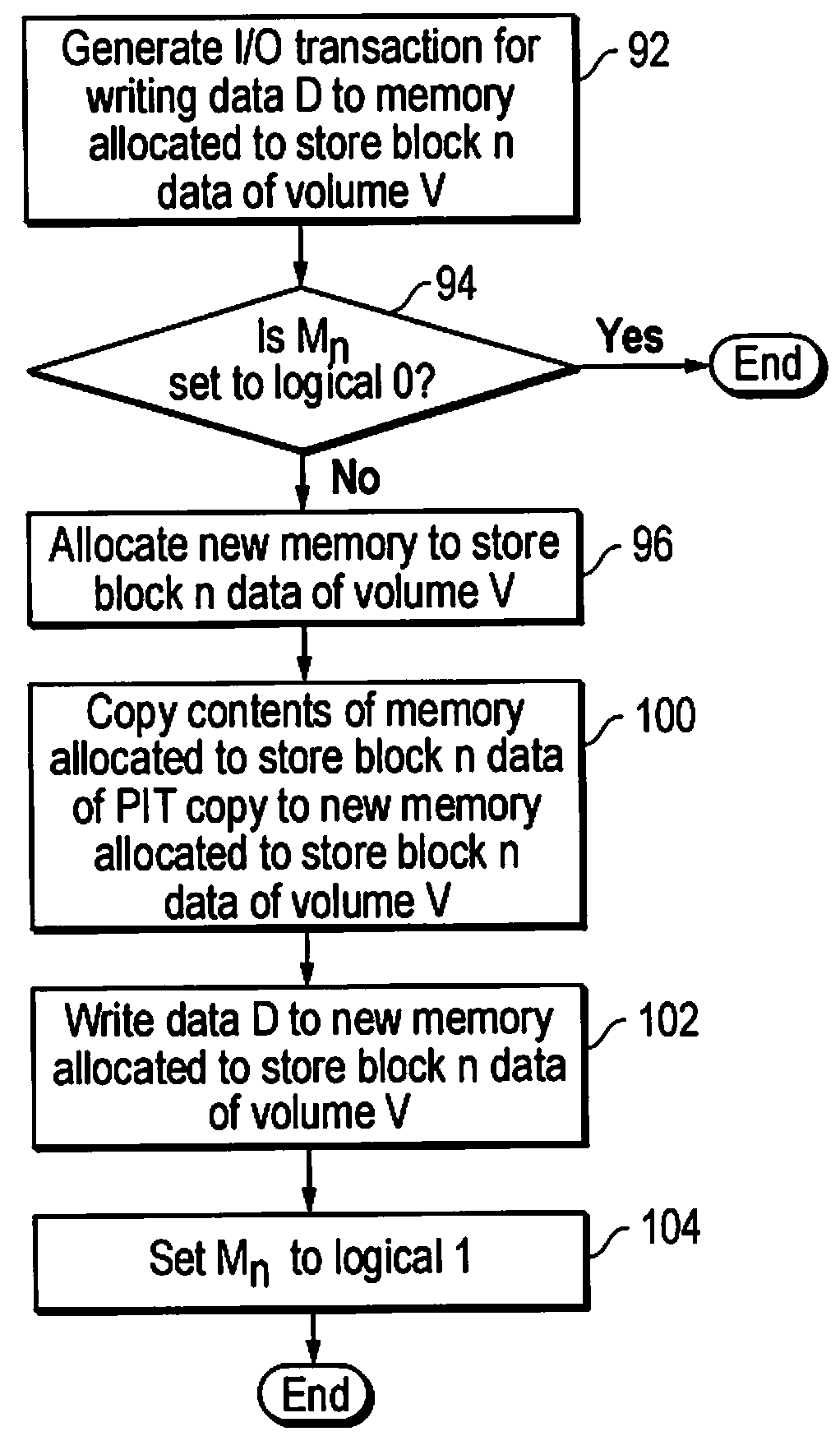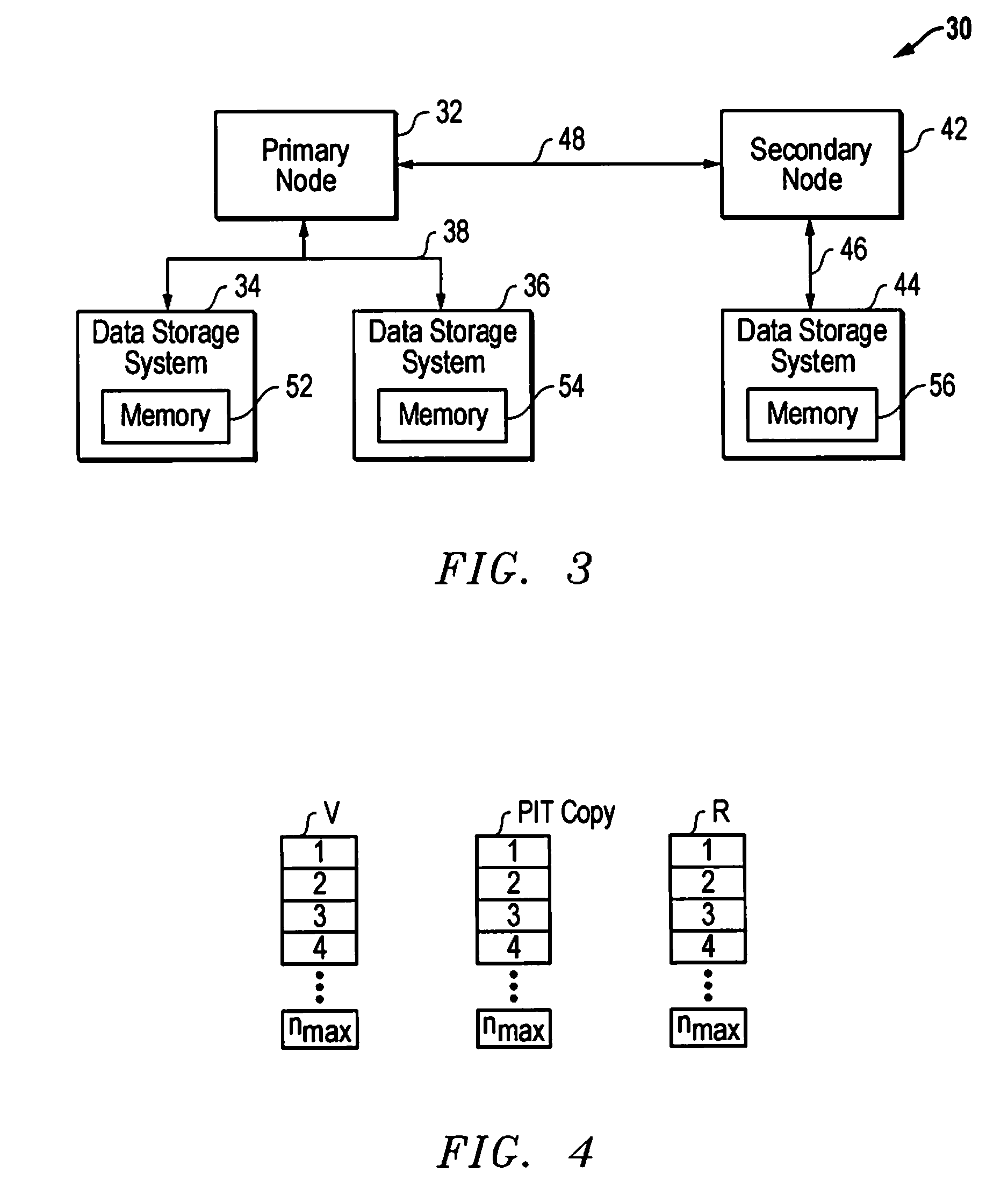Using data copies for redundancy
a technology of data copying and redundancy, applied in the field of using data copying for redundancy, can solve the problems of corrupted data, inaccessible memory allocated to store data of the first data block, and inaccessible memory allocated to store data of the data volume, etc., and achieve the effect of overcomplicating the inaccessibility of memory allocated
- Summary
- Abstract
- Description
- Claims
- Application Information
AI Technical Summary
Benefits of technology
Problems solved by technology
Method used
Image
Examples
Embodiment Construction
[0020]The present invention relates to the method or apparatus for using a data copy (e.g., a PIT copy of a volume V or a replica R of a volume V) for quickly and efficiently responding to an IO error caused by, for example, data corruption or data inaccessibility. In one embodiment, the method may be implemented by a computer system executing instructions stored on a computer readable medium.
[0021]FIG. 3 is a block diagram of a data processing system 30 employing one embodiment of the present invention, it being understood that the present invention should not be limited to use in a data processing system such as that shown in FIG. 3. System 30 includes a primary node 32 coupled to data storage systems 34 and 36 via data link 38. The term “coupled” should not limited to a direct connection between two components such as primary node 32 and data storage system 34 shown in FIG. 3. The term “coupled” is also meant to include an indirect connection between two components. For example, ...
PUM
 Login to View More
Login to View More Abstract
Description
Claims
Application Information
 Login to View More
Login to View More - R&D
- Intellectual Property
- Life Sciences
- Materials
- Tech Scout
- Unparalleled Data Quality
- Higher Quality Content
- 60% Fewer Hallucinations
Browse by: Latest US Patents, China's latest patents, Technical Efficacy Thesaurus, Application Domain, Technology Topic, Popular Technical Reports.
© 2025 PatSnap. All rights reserved.Legal|Privacy policy|Modern Slavery Act Transparency Statement|Sitemap|About US| Contact US: help@patsnap.com



